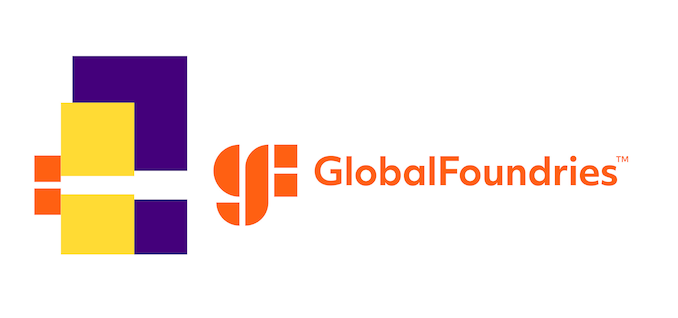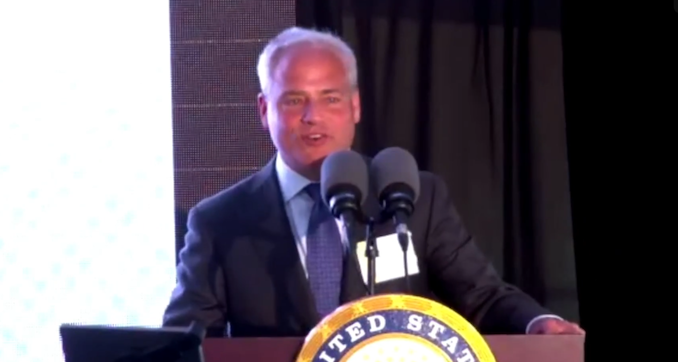GlobalFoundries To Spend Billions: Doubling Fab 8, Creating New Fab in NY
by Dr. Ian Cutress on July 19, 2021 11:36 AM EST- Posted in
- GlobalFoundries
- Semiconductors
- Fab 8
- Malta

Today at a private GlobalFoundies event, CEO Tom Caulfield accompanied by Senate Majority Leader Chuck Schumer, announced that the company is set on expansion. At the heart of this new initiative is a doubling of Fab 8, GF’s leading manufacturing facility, at the cost of around $1B. Accompanying this is the disclosure that GF is going to build another manufacturing facility close to Fab 8, in Malta NY, as part of a Private-Public partnership. Details of the new facility were not given.
GlobalFoundries is a contract manufacturer of microprocessors, focusing on adjacency technologies from 12nm and larger geometries. While most column inches are spent discussing the leading-edge manufacturing at GF’s competitors, in a discussion with the CEO we were told that GF addresses around 70% of the semiconductor market and in the current climate is currently running all of its facilities at maximum production.
GF has three main fabs in Malta NY, Dresden Germany, and Singapore – all three are running at maximum output, and GF recently announced a new plant in Singapore capable of 450K wafers per year. Tom Caulfield told us prior to that announcement that the Malta fab is around two-thirds full of equipment, Dresden is at about half, but Singapore is full, hence the new Singapore fab. In March GF announced a $1.4B expansion divided equally between the three sites, with Production capacity is expected to increase by 13% this year and by 20% next year as a result of the increased funding. Today’s announcement commits to adding additional machines at Malta to scale out to the space already there, for another 150k wafers per year, at a cost of $1B.

New website with the new branding. They should have put 'Moore'
The other element of the announcement is the new fab in Malta. The deployment of a new facility, especially at scale, costs billions. GlobalFoundries today acknowledges that it will take billions, citing the US government’s desire to increase national manufacturing in light of the global scale and building more on American soil. Exactly how GF will implement a new facility has not been disclosed – no timeline, no costs, no information about where the funding is coming from, or what process nodes will be manufactured on-site. It was announced that it would be a private-public partnership, developing chips for high-growth areas such as automotive, 5G, and IoT. The fab is set to create 1000 technical jobs and another few thousand in ancillary positions in the local area to support it. Discussions were also made in light of the semiconductor supply chain, and the need to invest and evolve that part of the business alongside manufacturing improvements. Senator Schumer spoke about the need to pass grow semiconductors, holding up a bag of chips alongside a wafer.
These announcements are part of a train of recent disclosures and talk about GlobalFoundries. Last week it was rumored that Intel was seeking to acquire GF for $30 billion, however today GF announced a complete logo change and rebranding of the business, which doesn’t tend to occur if a company is in the process of acquisition talks. Alongside this, GF is expected to bring forward its Initial Public Offering (IPO) from 2022 to late 2021. The company is currently owned wholly by the Emerati state holding company Mubadala, and the IPO is on the back of some growth of GF in light of the high semiconductor demand environment. GlobalFoundries expects 2021 revenue to be around $6.2 billion, a +9% growth over 2020.
Official Press Release from GlobalFoundries
Related Reading
- GlobalFoundries To Build New 450K Wafer-per-Year Fab in Singapore
- AMD and GlobalFoundries Update Wafer Supply Agreement: Orders Through 2024, Now Non-Exclusive
- GlobalFoundries Upgrades for Silicon Photonics in Quantum Computers
- GlobalFoundries to Invest $1.4B in Expansion, Potential Earlier IPO
- GlobalFoundries' 22FDX with MRAM is Ready
- GlobalFoundries and SiFive to Design HBM2E Implementation on 12LP/12LP+
- GlobalFoundries and TSMC Sign Broad Cross-Licensing Agreement, Dismiss Lawsuits












74 Comments
View All Comments
dotjaz - Wednesday, July 21, 2021 - link
Similarly for higher performance pieces 115W isn't even an issue. Definitely not limited by the IOD. Not to mention next gen 12LP+ is improving upon 12LP.Spunjji - Tuesday, July 20, 2021 - link
Mobile Ryzen is already a monolithic die for power reasons, but I think AMD have now hit the point where a shrink of the IO die would benefit them, in the Server arena at the very least.Targon - Tuesday, July 20, 2021 - link
The I/O die may be the reason for the problems getting the Infinity Fabric speed up to 2GHz or above. The APUs(4000G and 5000G) are rumored to be able to hit 2.2-2.4GHz for the IF speed, and those are monolithic processors without the I/O die, so are all TSMC without Global Foundries.I appreciate the need to save TSMC fab process for the CPU core manufacturing, but even using Global for the I/O die is holding AMD performance back.
haukionkannel - Tuesday, July 20, 2021 - link
Too expensive to go 7nm… that is why not.Targon - Tuesday, July 20, 2021 - link
How much of that is conservative management that is afraid of doing an INVESTMENT in R&D. Sure, there is a lot of expense, but once they get it working, the payoff would be huge.saratoga4 - Wednesday, July 21, 2021 - link
GF invested in a 7nm process but had few customers so they cancelled it. Not surprising, no amount of investment is going to make designing around a niche logic node that might not exist in a year a good business decision vs playing it safe with TSMC.fcth - Monday, July 19, 2021 - link
They basically gave up on getting smaller, killing their 7nm process and abandoning their 5nm and 3nm research: https://www.anandtech.com/show/13277/globalfoundri...Perhaps the hot market now will allow them to pick that up, but they'd be behind in the game. The rumored buyout by Intel might benefit them both in that regard, with Intel getting more capacity, and GloFo getting back in on modern process technology (despite Intel's massive struggles, they at least have things in the pipeline).
Papaspud - Monday, July 19, 2021 - link
A lot of money to be made in that size, you don't need to be cutting edge for most uses- cars, stoves, etc. The world doesn't have enough capacity right now, so this is just trying to fill that hole.Kushan - Monday, July 19, 2021 - link
Surely there's economies of scale, though? Smaller process node means more chips to sell?I agree it does make business sense, it just seems weird that they're not investing at all.
FunBunny2 - Monday, July 19, 2021 - link
"Surely there's economies of scale, though? Smaller process node means more chips to sell?"therein lies the Capitalist's Conundrum: the Tyranny of Fixed Cost. the more capital intensive the production process, the higher the fixed cost of production, which means lower flexibility of output. the higher the fixed cost, the only way to lower average cost is to boost output, spreading the fixed cost over more units. if demand slackens, even a teeny bit, average cost jumps, and then what do you do? firing employees buys you little to nothing. the notion that *all* production, globally, needs to be at Xnm is false. most embedded chips still run on double digit nodes, and likely always will. because the capital is largely, if not entirely, amortized, producers' average cost is much lower. cutting edge gaming and whatever-edge AI are the outliers, not the norm.